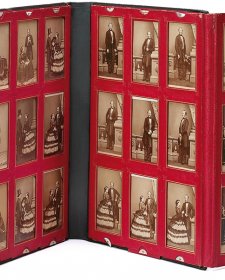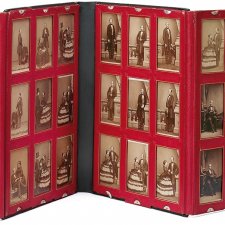- About us
- Support the Gallery
- Venue hire
- Publications
- Research library
- Organisation chart
- Employment
- Contact us
- Make a booking
- Onsite programs
- Online programs
- School visit information
- Learning resources
- Little Darlings
- Professional learning
Victoria (1819–1901) was Queen of the United Kingdom of Great Britain and Ireland from 1837 until her death in 1901. The daughter of Edward, Duke of Kent, and his wife, Princess Victoria of Saxe-Coburg-Saalfield, she ascended the throne at eighteen on the death of her uncle, King William IV, all of her father’s older brothers having died without fathering any surviving legitimate children. She married her cousin, Prince Albert of Saxe-Coburg and Gotha, in 1840. They had nine children, and on Albert’s death in 1861 she entered a period of mourning that she maintained for the rest of her life. From 1876, she also used the title Empress of India. She gave her name to an era that has since become popularly thought of as conservative, prudish, and antithetical to women’s rights, yet Victoria presided over a vast empire and wielded significant influence on the policies of the many governments and colonies she was responsible for. Victoria and Queensland are just two of the numerous places around the world that are named for her. With a reign of 63 years and seven months, she held the record as history’s longest reigning female monarch, and as the longest reigning British monarch, until she was eclipsed for both titles by her great-great-granddaughter Queen Elizabeth II.
Collection: National Portrait Gallery
Purchased 2020



On one level The Companion talks about the most famous and frontline Australians, but on another it tells us about ourselves.



Joanna Gilmour discusses the role of the carte de visite in portraiture’s democratisation, and its harnessing by Victoria, the world’s first media monarch.



Visit us, learn with us, support us or work with us! Here’s a range of information about planning your visit, our history and more!